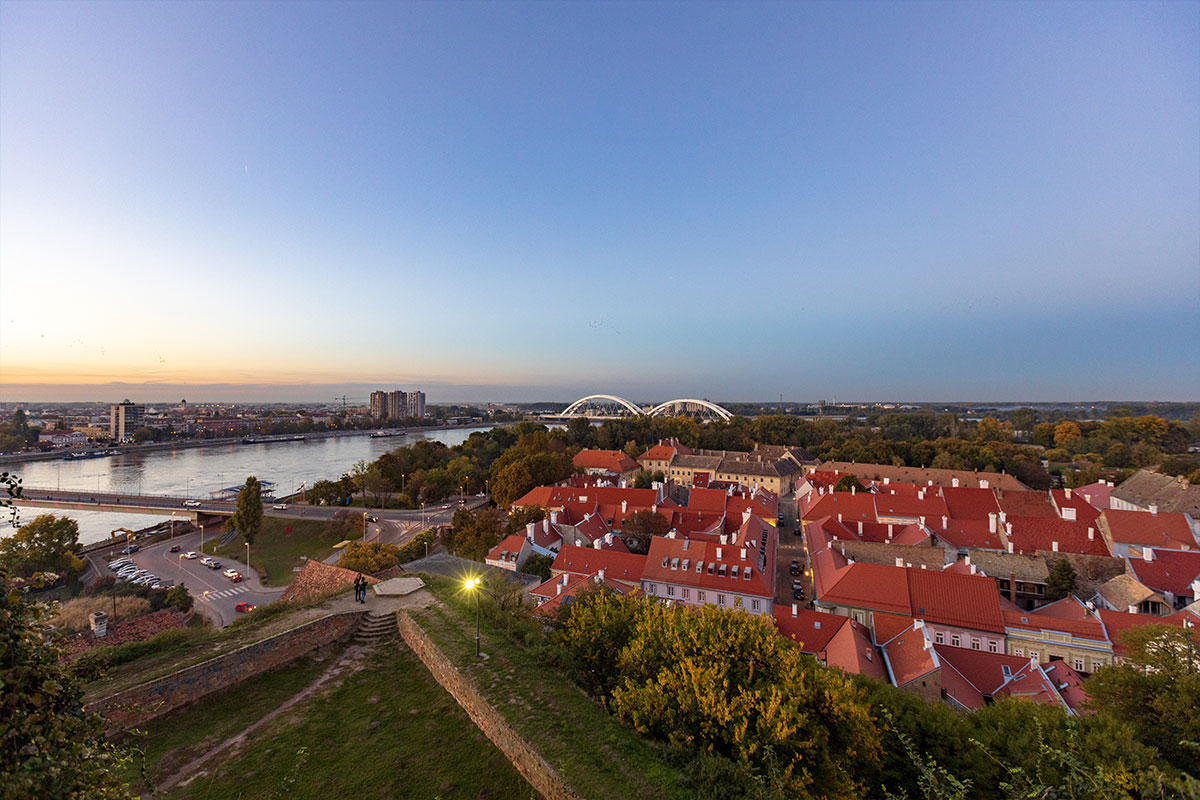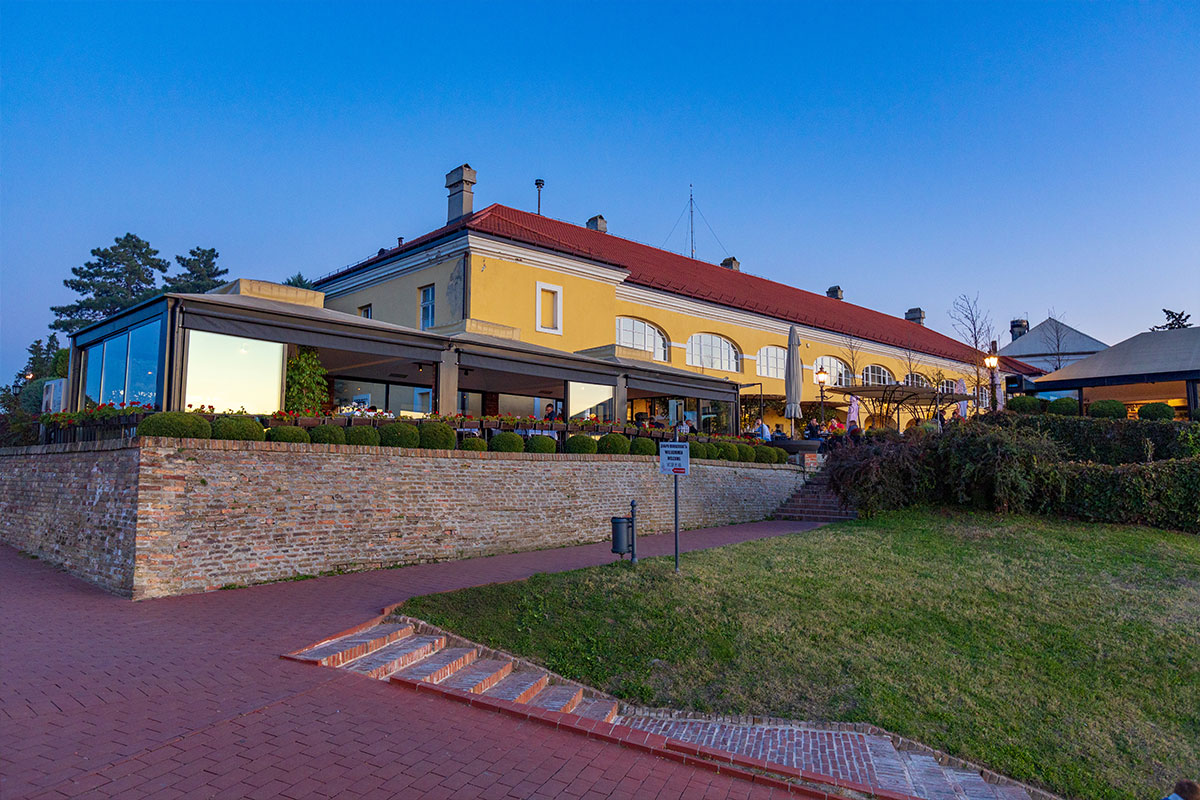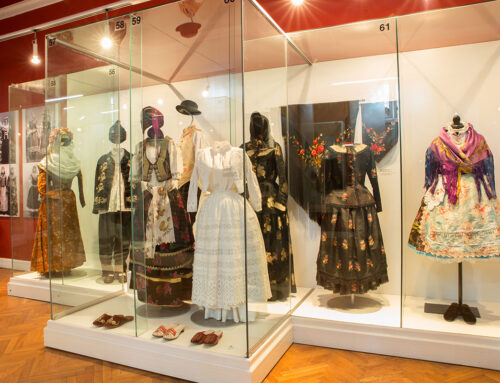With its charming architecture, fascinating history, colorful culture and numerous cafes and restaurants, Novi Sad, together with its surroundings, is a place where everyone can be completely relaxed and feel welcomed. Our recommendation is to explore it by walking its streets, especially those in the old town and the suburbs of Petrovaradin Fortress.
The tour through Novi Sad should start with the most important tourist attraction of the city, the Petrovaradin Fortress, one of the best preserved and largest fortresses in Europe, which is known by the nickname Gibraltar on the Danube due to its former glory. During the tour to the Upper Town of the Fortress, you will see the most famous symbol of Novi Sad, the Clock Tower, known by the nickname Drunk Clock, as well as the Officer’s Pavilion and the Fortress Terrace where popular restaurants are located. We suggest, with prior notice, a visit to the City Museum, as well as to the Underground Military Galleries, a unique attraction of the corridors of the old defense system. You can also discover the studios of the art colony Likovni krug, which brings together painters, photographers, sculptors, designers, or Atelje 61, a unique institution for making artistic tapestries. We also suggest a walk through the Gradić, the Lower Town of the Fortress, famous for its old Baroque buildings. With prior notice here you can visit the Roman Catholic Church of St. Juraj with an attractive crypt (catacombs) and the Serbian Orthodox Church of St. Paul.
You can have lunch in restaurants in the city center, at the Petrovaradin Fortress or on the popular Fisherman’s Island. The Danube riverfront can also be especially interesting because of the beautiful view of the fortress or bars where you can relax with a coffee, cake and a soothing view of the Danube.
The old urban city core of Novi Sad is made up of an urban area of the Liberty Square, Zmaj Jovina and Dunavska (Danube) Street. The City Hall and the Roman Catholic Church of the Name of Mary dominate the Liberty Square. Catholic Churchyard is a pleasant, small square, overshadowed by the Roman Catholic Parish Church of the Name of Mary and the nearby Synagogue. Zmaj Jovina and Dunavska Street are pedestrian zones intersected with passages that accommodate numerous shops, restaurants, confectioneries and craft shops. he Palace of the Bačka Bishop of the Serbian Orthodox Church built in 1901 in the Serbian-Byzantine style stands as one of the most monumental and representative buildings of this pedestrian zone. The Serbian Orthodox Church of St. George is positioned adjacent to the Bishop’s Palace. The area in front of the Bishop’s Palace is occupied by a monument dedicated to a physician and poet Jovan Jovanović Zmaj.
Dunavska Street begins with the building “At the White Lion’s” (built during the first decades of the 18th century) and that of the City Library. The street is a home to the Foreign Art Collection, Museum of Vojvodina and Museum of Contemporary Art of Vojvodina. Dunavski (Danube) Park relies partly on Dunavska Street the regulation and drainage works on which started by the end of the 19th century transforming it into what it is today – a monument of nature and protected natural resort.
In the center of the city is the Gallery Square, which houses representative galleries of national importance: the Matica Srpska Gallery, the Pavle Beljanski Memorial Collection and the Rajko Mamuzić Gift Collection.
If you are a nature lover, now is the right time for Fruška gora. Visiting vineyards, wine cellars, monasteries, hiking marked mountain trails, are just some of the activities that this mountain offers. We also warmly recommend fish soup on the Danube chard or a slow meal on farms near the city, where quince, apples, pears, grapes, hazelnuts, walnuts, pumpkins, tomatoes, paprika specialties… dominate in the autumn.
An unavoidable stop on your way is the fabulous baroque town of Sremski Karlovci, which is very important for the history of the Serbs since it was the seat of the Metropolitanate and Patriarchate of Karlovci. During the tour of the old town, you will see cultural monuments and institutions created mainly during the 18th and 19th centuries: the Theological Seminary, the Karlovac Gymnasium, the Patriarch’s Palace, the Cathedral – a baroque church dedicated to St. Nikola, the Chapel of Peace – built in the place where the Karlovac Peace Treaty was signed in 1699, the Theological Seminary, the Fountain “Four Lions” built in honor of the completion of the first aqueduct. The city has a long tradition in growing vines and wine production, so we recommend a pre-announced visit to one of the wineries with wine tasting.
In the immediate vicinity of Sremski Karlovci, on the territory of the National Park Fruška gora, you can visit the picnic area Stražilovo, where you’ll find the grave of the poet Branko Radičević, a restaurant and a mountain lodge. Visit some of the monasteries of Fruška gora, such as Krušedol, Grgeteg or Velika Remeta. If you decide to visit the monastery of Novo Hopovo, the popular picnic area Irishki venac is nearby with the monumental statue of Freedom.
In cooperation with Novi Sad hotels, the Tourist Organization of the City of Novi Sad offers you a special offer: #Plati2NociOstani3















Social Network